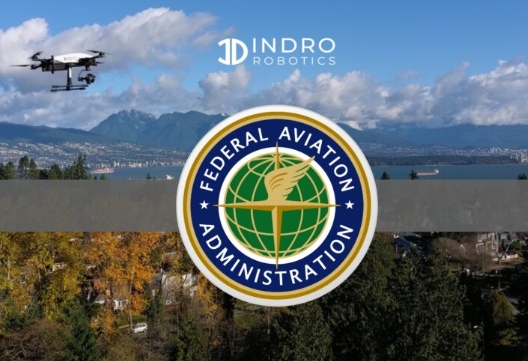InDro Robotics has obtained a waiver from the Federal Aviation Administration (FAA) to conduct Beyond Visual Line of Sight flights in the US. InDro has done this at multiple facilities in Canada already, operating from hundreds of kilometres away. Receiving the FAA approval means the company is able to deploy the same solution in the United States.
The waiver allows InDro to expand its programme of remotely piloted infrastructure inspections which include a Visual Observer during the flight. Specifically, the FAA waiver permits InDro to remotely operate drone inspections of fenced solar farms in Class G airspace, 10 miles (16 km) from airports. Operations can reach a maximum altitude of 400 ft AGL.
The waiver opens the skies for InDro to tap into a large market, remotely inspecting some of the 2,500+ solar farms in the United States.
According to the press release:
Traditionally solar farms inspection has been done by employees walking the grounds with a handheld thermal sensor, plus their own visual inspection. But this task is time-consuming, and can last days at a large facility.
As a result, many solar farms have switched – or are in the process of switching – to aerial inspection using drones. Combining visual and thermal inspection from above, issues with broken, malfunctioning and even dirty panels can be quickly identified. Many solar farms can be inspected in less than an hour and even large installations usually take less than a day.
But doing drone inspections with employees comes with a cost. The pilot must meet FAA Part 107 or Transport Canada standards. That involves training, time and money before even purchasing a drone. Plus, with next-generation drones coming out with better sensors, longer flight times and newer features, it doesn’t take long before that drone will require replacing.
The InDro Robotics solution is to ship the client a current drone, suited to the task. The company works with someone on-site, instructing them how to turn on the drone and act as a Visual Observer. One of our pilots then flies the mission remotely, maintaining continuous communication via phone with the visual observer.
With a solid 5G connection, data is uploaded directly to the cloud during the mission and processing begins. InDro compiles a report identifying anomalies in the hands of most clients shortly after the mission. Once the flight is complete, the drone is packed up and shipped back to InDro.
For more information visit:




